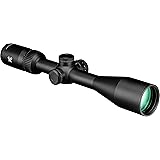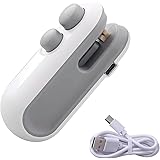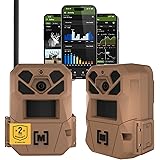Debunking Harmful Survival Tips: Your Guide to Smarter First Aid
In a world overflowing with information, it can be challenging to distinguish between genuine life-saving advice and potentially harmful myths. When it comes to emergency first aid, misconceptions can turn a bad situation into a critical one. This article, complementing the video above, aims to shed light on common harmful survival tips that are widely believed but incredibly dangerous. Knowing the correct approach in an emergency is not just beneficial, it is truly essential for effective emergency first aid.
Many people have been taught traditional methods that, while well-intentioned, are actually detrimental. Our goal here is to correct these widespread first aid mistakes, ensuring you are equipped with accurate knowledge to handle urgent situations. Correct information empowers individuals to act calmly and effectively when it matters most, preventing further injury or even saving lives.
1. Severe Bleeding: When a Tourniquet Isn’t the First Step
When faced with severe bleeding, the immediate instinct for some is often to apply a tourniquet. This action, however, is a common error and represents one of the most significant first aid mistakes. While tourniquets are crucial tools, their use is reserved for specific scenarios and should not be the initial response.
Instead, the first priority is to contact emergency services immediately. Once professional help has been summoned, direct pressure is to be applied to the wound. A clean cloth or sterile bandage should be placed firmly over the injury, and constant pressure maintained. Elevating the injured limb above heart level can also be beneficial, as this helps to reduce blood flow to the area. A tourniquet may be applied as a secondary measure if bleeding remains uncontrolled, placed just above the wound, and the time of application should always be noted for medical personnel.
2. Nosebleeds: Why Tilting Your Head Back is Harmful
For many, a nosebleed immediately triggers the advice to tilt the head back. This traditional response is among the most persistent and problematic harmful survival tips. Tilting the head backwards allows blood to run down the throat, which can lead to gagging, choking, or even vomiting. This is a particularly unpleasant and potentially dangerous experience during a nosebleed.
The correct approach involves sitting the person down and tipping their head slightly forward. This position encourages the blood to flow out of the nose, rather than backward. The soft part of the nose should then be pinched firmly with fingers for at least 10 minutes. If bleeding persists, pressure should be maintained for another 10 minutes. It is also important that any blood in the mouth is spit out, and cotton balls or tampons should not be inserted into the nostrils, as this can exacerbate the bleeding.
3. Hypothermia: Avoiding Dangerous “Warming Up” Myths
Hypothermia occurs when the body’s core temperature drops below 95° Fahrenheit, a serious condition that can be life-threatening if not treated properly. Common symptoms include uncontrollable shivering, slurred speech, a weak pulse, and even loss of consciousness. One of the most dangerous first aid mistakes made in these situations is to rub the body vigorously, attempting to create warmth through friction.
This action can be harmful, potentially causing further damage to tissues and disrupting the body’s attempt to regulate temperature. Immediate medical attention is vital, so calling an ambulance should be the first step. The person should be moved to a warm room, and any wet clothing should be replaced with dry, warm attire. The affected individual should be wrapped in warm blankets, and warm, dry compresses can be applied to the chest. Sweet, warm drinks and a hot meal can also be offered, but alcohol must never be given, as it dilates blood vessels and ironically leads to further heat loss.
4. Cardiac Arrest: Tailoring CPR to Age Groups
In the event of cardiac arrest, immediate action through CPR can be life-saving. However, a critical piece of information often overlooked is that CPR techniques must be adjusted according to the age of the individual. Failing to adapt the technique is a significant emergency first aid error that can reduce effectiveness or even cause harm.
After calling 911, CPR should be initiated. For adults, compressions are performed with two hands placed in the center of the chest, pressing down to a depth of approximately 2 inches. For children, either one or two hands can be used, depending on their size, with compressions reaching a depth of no more than 1.5 inches. Infants require only two fingers, pressing down 1 to 1.5 inches in the center of the chest. While hands-only CPR is often recommended for adults, children and infants typically require a combination of 30 compressions to two breaths of mouth-to-mouth resuscitation. Always ensure the person is on a flat, solid surface for effective compressions.
5. Burns: Dispelling the Blister-Popping and Rinsing Myths
Burns, even minor ones, are painful and require careful treatment. One of the most common harmful survival tips is to pop burn blisters. This should absolutely be avoided, as blisters act as a natural protective barrier against infection. Breaking them open significantly increases the risk of serious complications and slows healing.
For minor burns without significant tissue damage, the affected skin should be rinsed with cool water for 10-20 minutes until the pain subsides. A sterile bandage can then be applied, and aloe vera gel can help alleviate discomfort. For major burns, immediate emergency medical attention is crucial. Rinsing severe burns with water is generally not advised, as it can lead to a drop in blood pressure and reduced blood flow. Instead, the area should be covered with a cool, clean bandage, and the burned area should be elevated above heart level if possible, while awaiting medical professionals.
6. Airway Obstruction: Heimlich Maneuver for Conscious Victims Only
When someone is choking, the Heimlich maneuver is a recognized life-saving technique. However, a dangerous misconception is to perform this abdominal thrust on an unconscious person. This is a severe first aid mistake and should never be attempted. The procedure is specifically designed for conscious individuals who are unable to clear their own airway.
If a person is choking and conscious, stand behind them, wrap your arms around their waist, and lean them slightly forward. Make a fist with one hand, grasp it with the other, and perform quick, upward thrusts into the area just above the belly button. Roughly 10 thrusts are usually sufficient. If a person becomes unconscious, an ambulance must be called immediately. They should be laid on their back. If the obstruction is visible, it may be carefully scooped out with fingers covered in a cloth. If not visible, CPR should be started, as compressions can sometimes help dislodge the object. For pregnant women, the thrusts should be applied slightly higher, above the rib cage.
7. Dislocated Joints: The Danger of Self-Realignment
Action movies often depict someone effortlessly popping a dislocated joint back into place. This is a highly misleading and dangerous scenario that represents a prominent harmful survival tip. Attempting to manually reset a dislocated joint without medical expertise can cause severe damage to the joint itself, as well as surrounding muscles, nerves, and blood vessels.
The only appropriate action is to call an ambulance and prevent any movement of the injured body part. The limb should be immobilized using any available stiff object, such as a rolled-up magazine or piece of wood, secured with bandages. If no suitable objects are at hand, an arm can be fastened to the body, or a leg pressed and tightened against the other leg. Care must be taken not to apply bandages too tightly, as this can restrict blood flow. Applying ice to the dislocated joint can help manage pain and swelling until medical help arrives.
8. Food Poisoning: Hydration is Key, Not Medication
Food poisoning can be debilitating, causing dehydration, nausea, and stomach upset. A common first aid mistake is to avoid drinking water, or to immediately reach for anti-nausea medication. Dehydration can be a serious consequence of food poisoning, making fluid intake essential. Anti-nausea medications, without medical consultation, can sometimes mask symptoms or interfere with the body’s natural healing process.
Small, frequent sips of water are crucial to prevent dehydration, and gradually increasing the amount as tolerated. Bland foods such as bananas, rice, oatmeal, honey, or mashed potatoes should be consumed once the stomach settles. Spicy, sweet, or fried foods should be avoided until the system returns to normal. It is important not to induce vomiting, as this can sometimes worsen the situation. A doctor should always be consulted before taking any medication. If symptoms like severe stomach pain or bloody vomit occur, immediate medical attention is necessary.
9. Snakebites: Discarding the “Suck the Venom” Myth
The image of someone sucking venom from a snakebite is a prevalent scene in media, leading many to believe it is a valid emergency first aid technique. This is another highly dangerous and ineffective harmful survival tip. Sucking venom from a wound does not help and can introduce more bacteria into the wound, potentially causing infection. Similarly, applying tourniquets or ice to a snakebite is useless and can be harmful.
The correct first response is to call an ambulance immediately. The person should be laid down to slow the spread of the venom. The wound should be gently cleaned and covered with a clean cloth. If possible, the bitten area should be kept at or below heart level to minimize venom circulation. If the person becomes unconscious, CPR may be necessary. It is also helpful to try and remember what the snake looked like, as this information can assist medical professionals in selecting the appropriate antivenom.
10. Lower Abdominal Pain: The Danger of Painkillers
Abdominal pain is a common experience, but severe lower abdominal pain, especially when accompanied by fever, bloody stools, or bloating, warrants immediate medical attention. One of the most critical first aid mistakes in this situation is to take painkillers or muscle relaxers before a diagnosis. While the desire to alleviate discomfort is understandable, these medications can mask crucial symptoms, making it difficult for doctors to identify potentially life-threatening conditions.
Conditions such as acute appendicitis, bowel obstruction, or a perforated ulcer require swift and precise diagnosis. Painkillers can obscure the pain signals that are vital diagnostic clues. Therefore, self-medicating is strongly advised against. A doctor should be consulted promptly, allowing for accurate assessment and the initiation of appropriate treatment as soon as possible. Your well-being is always the top priority in any emergency.











